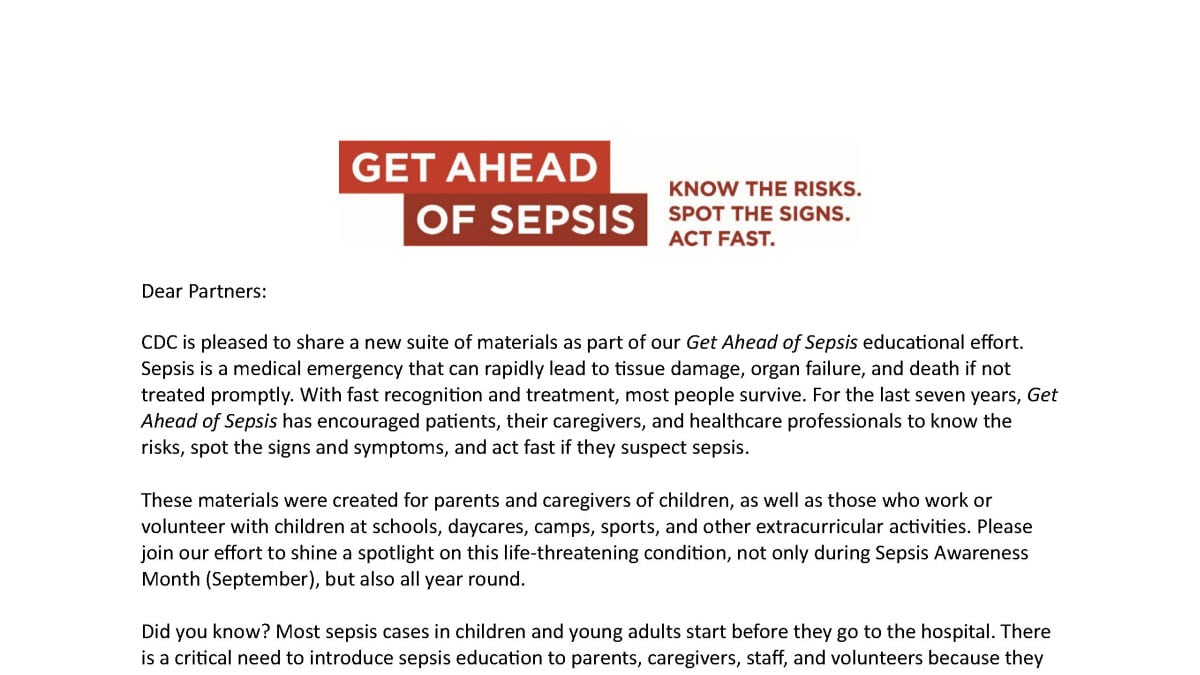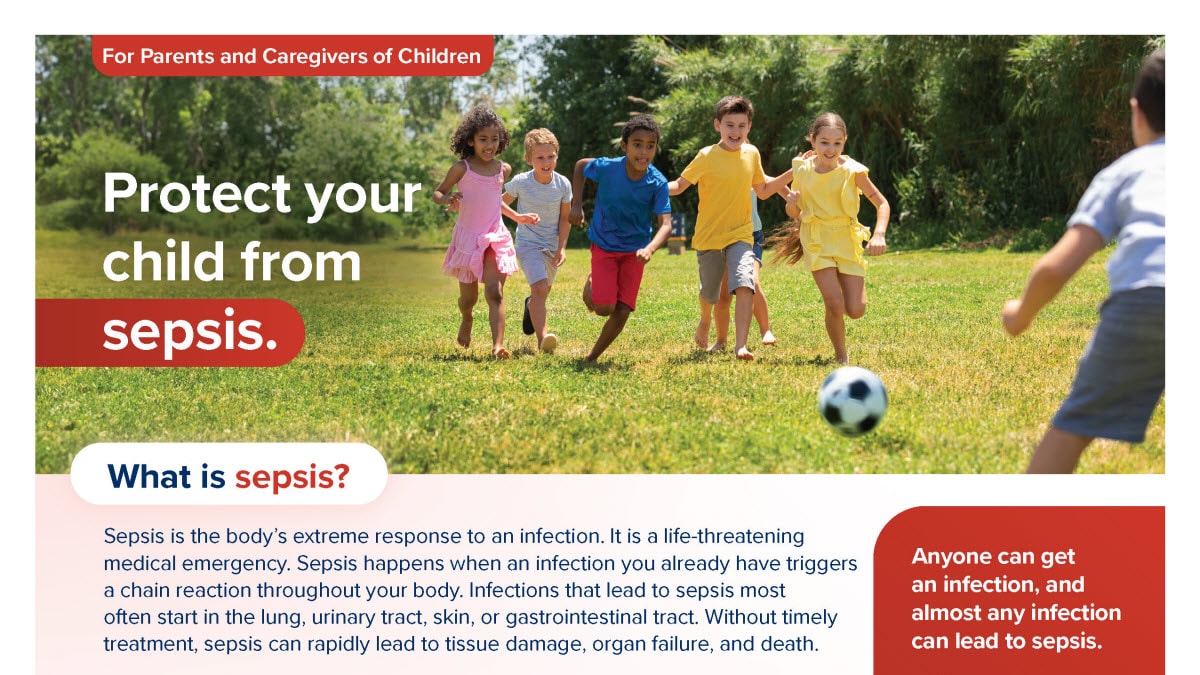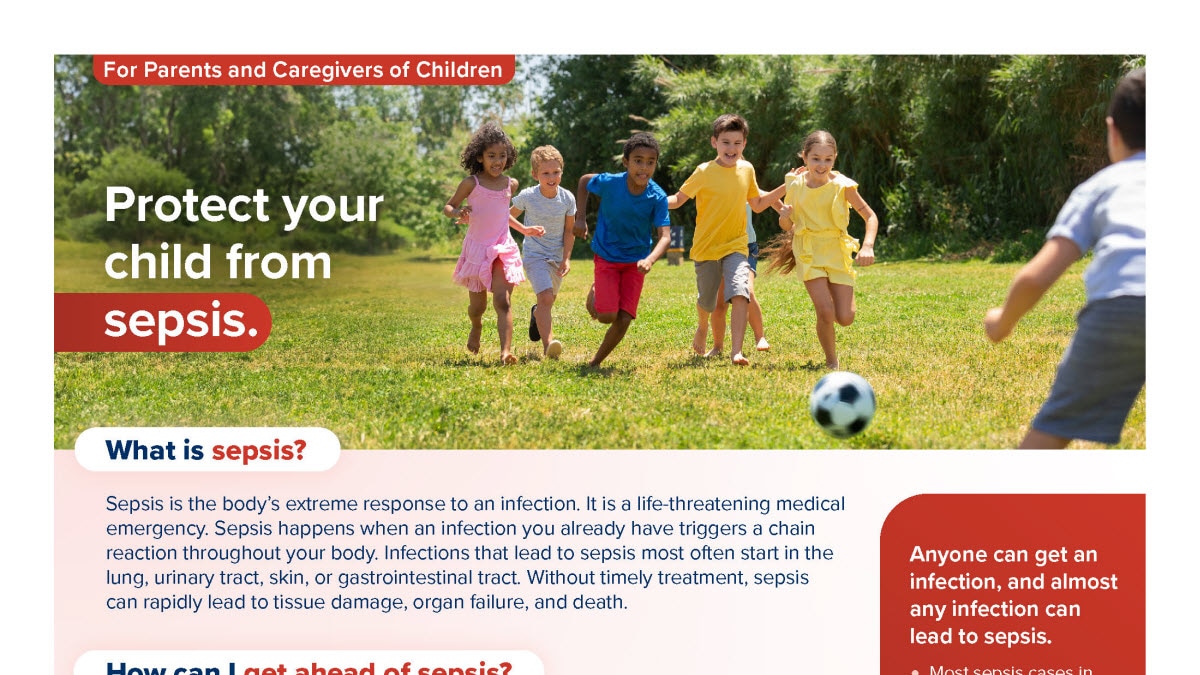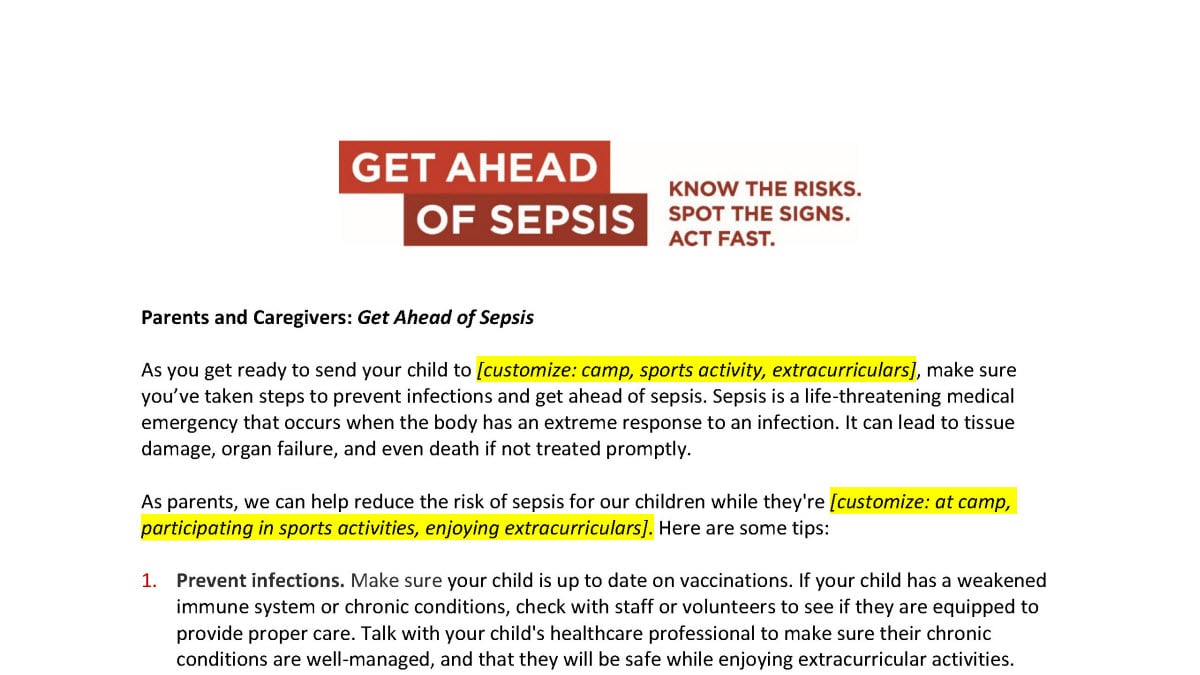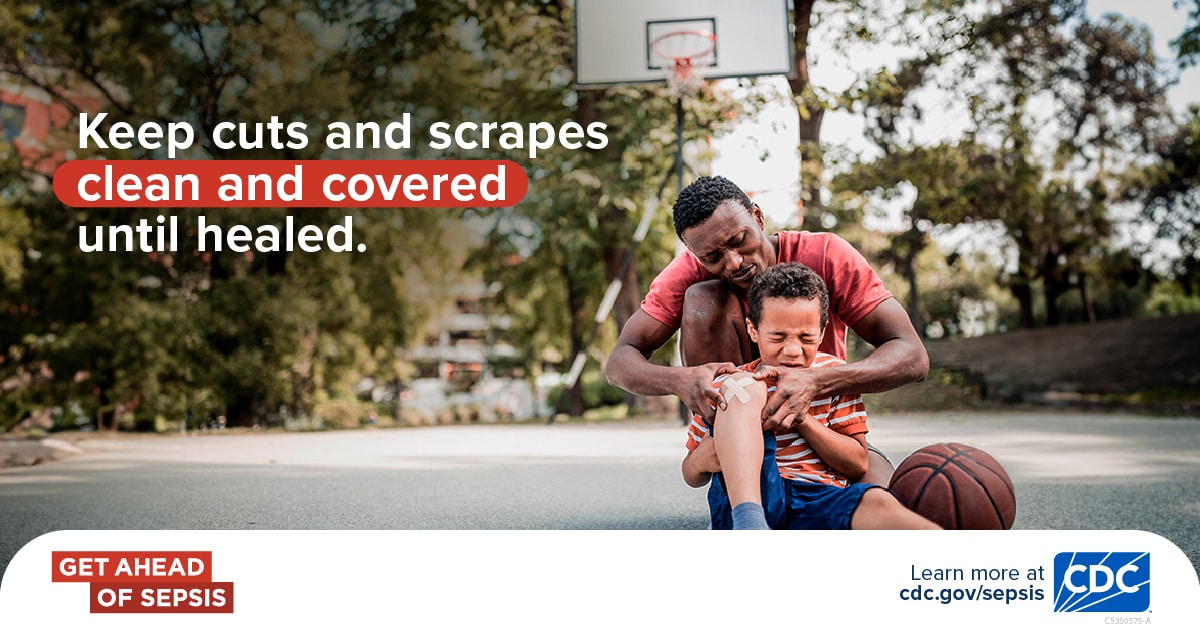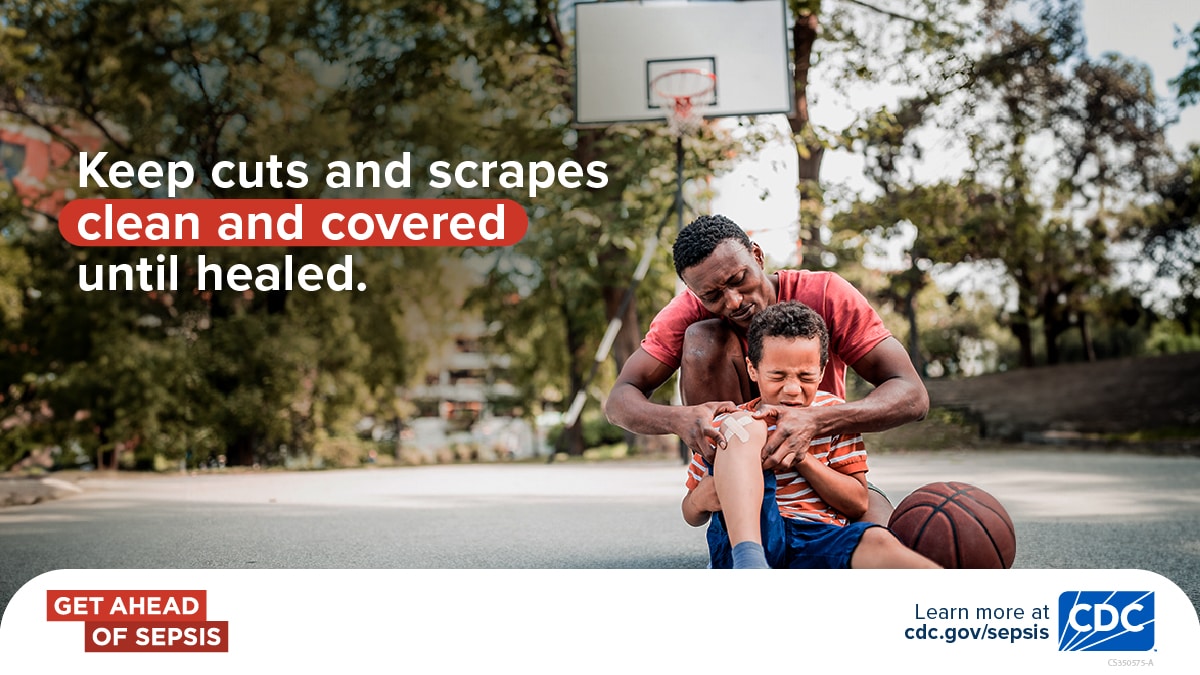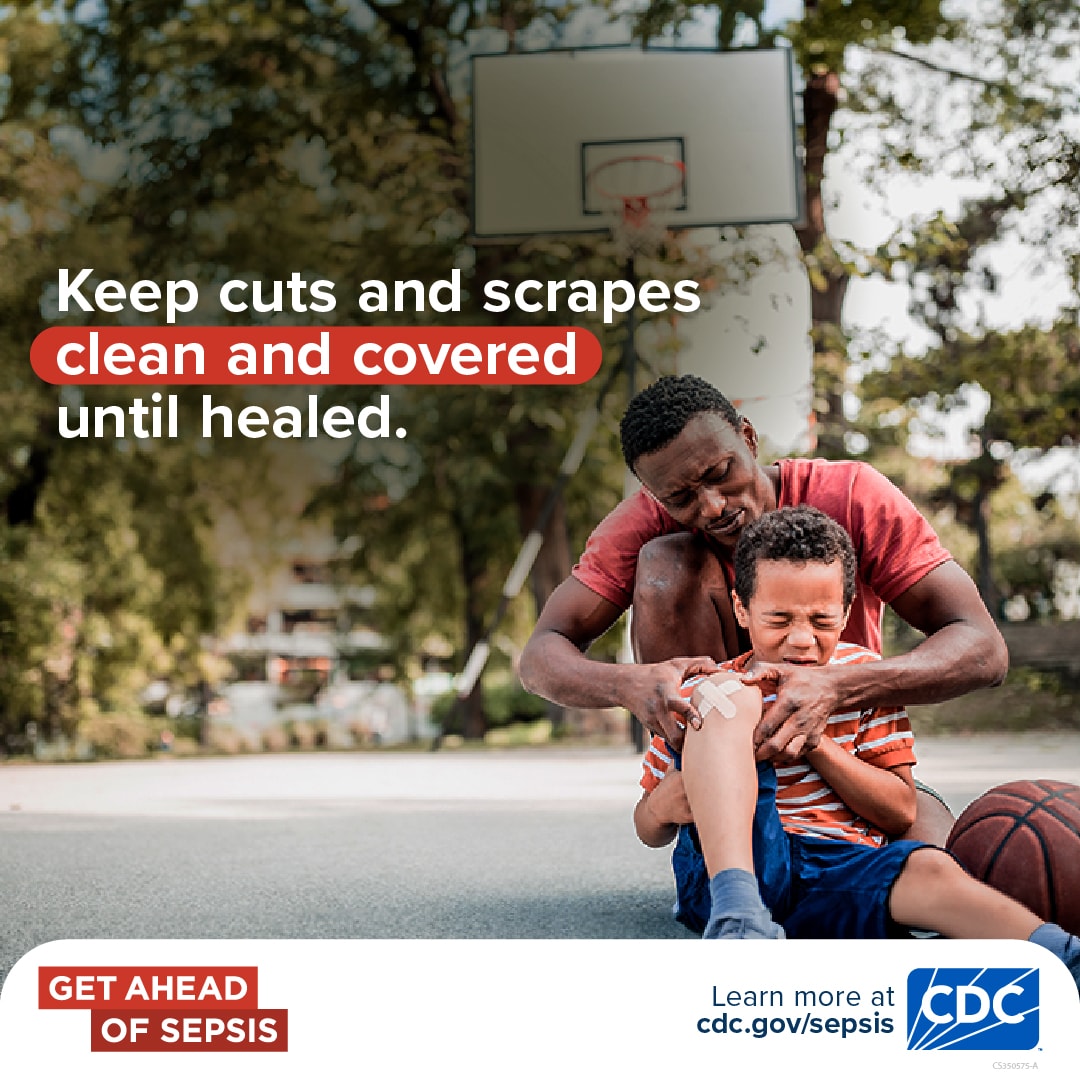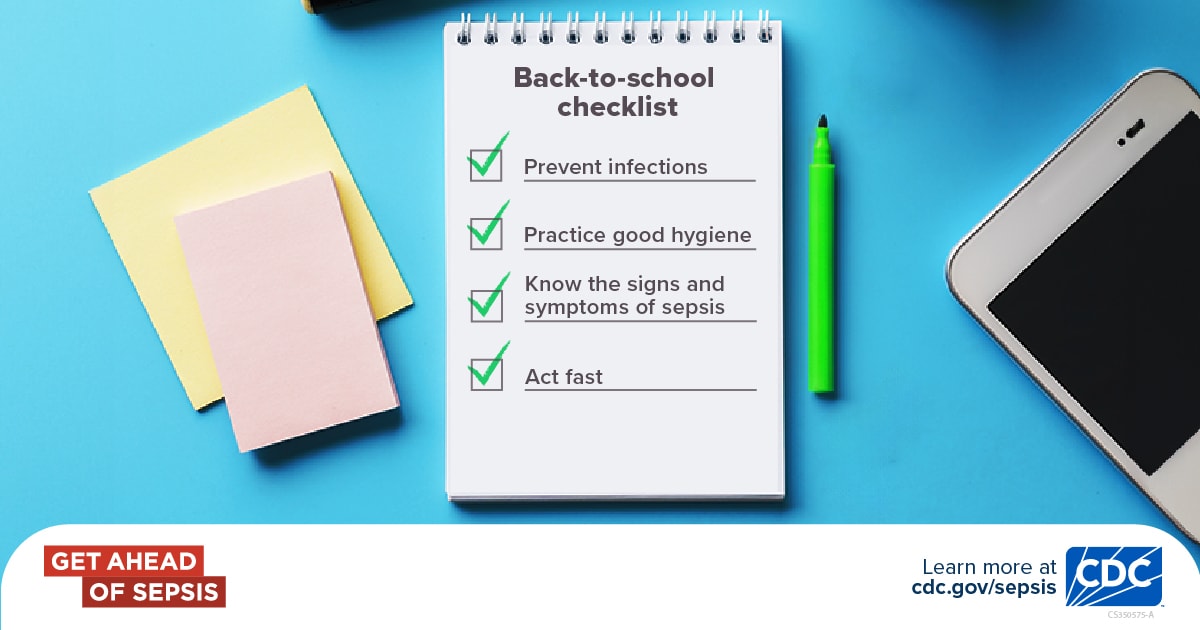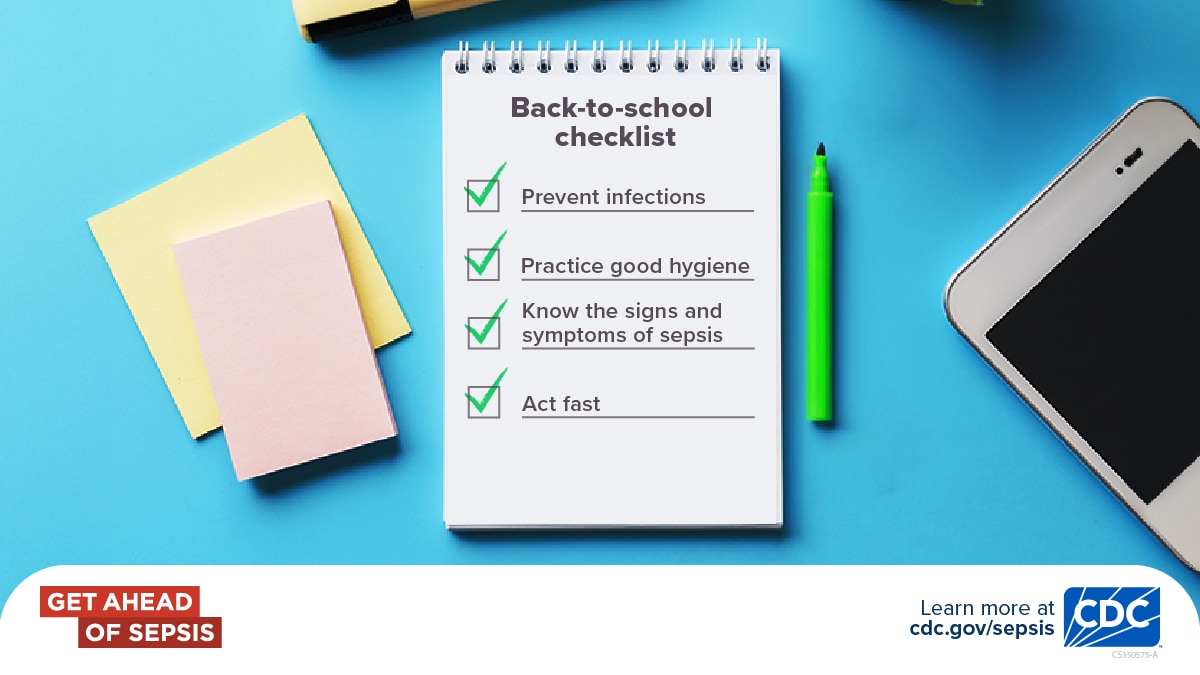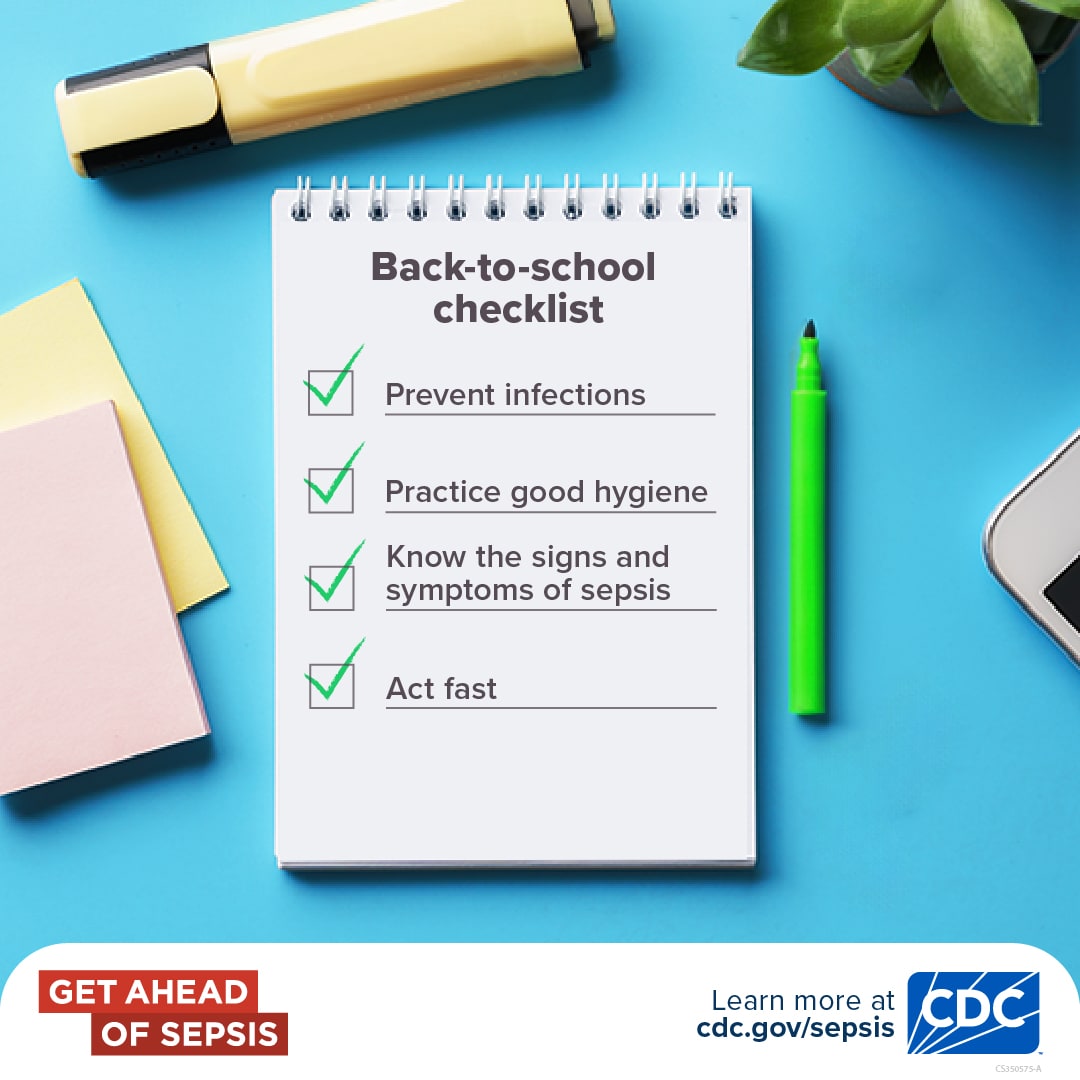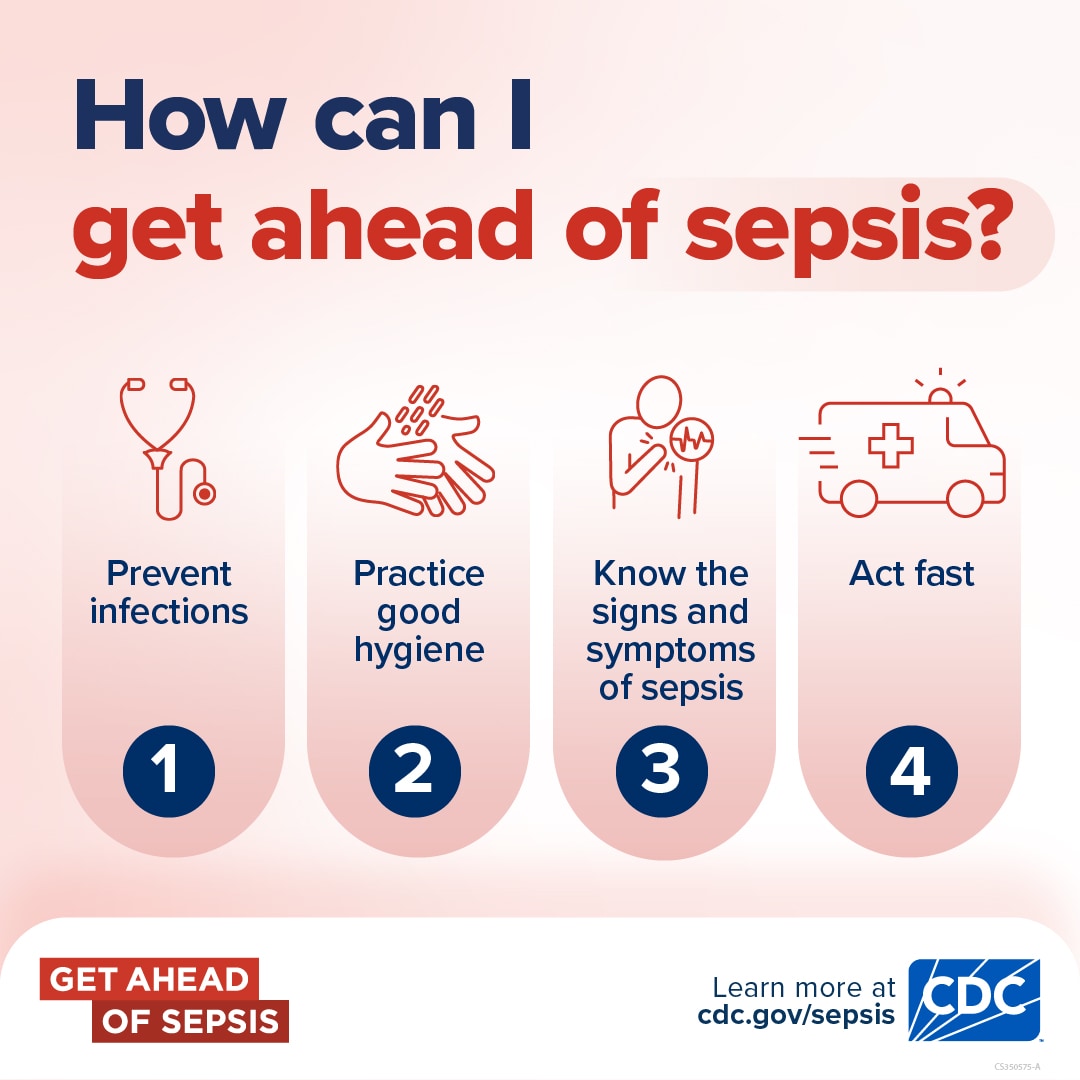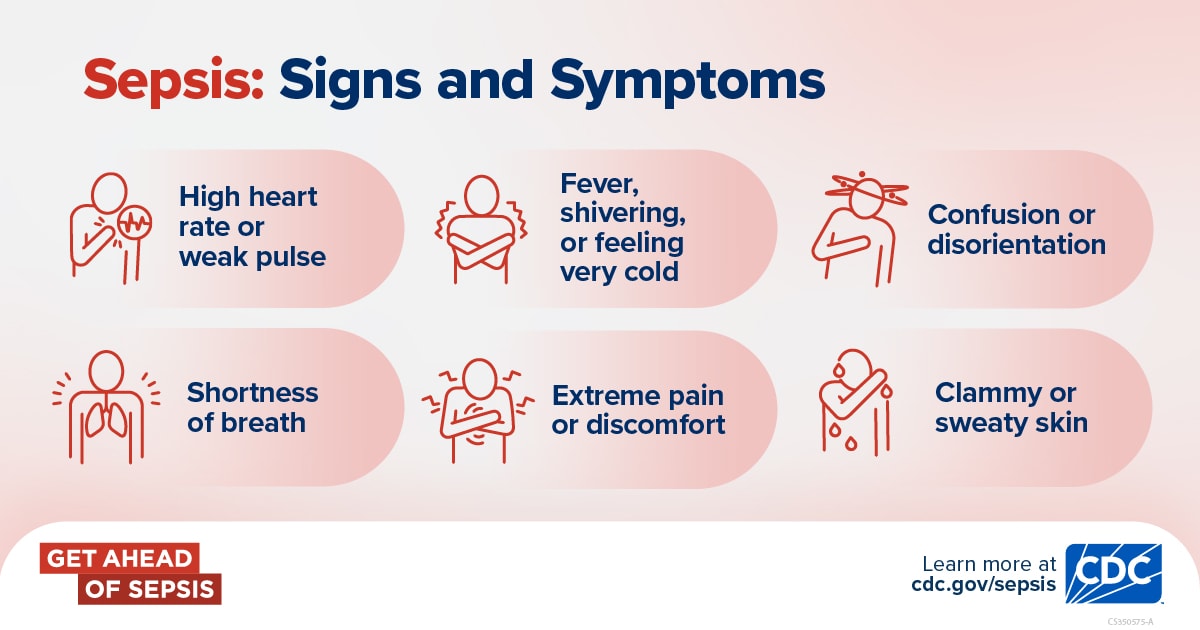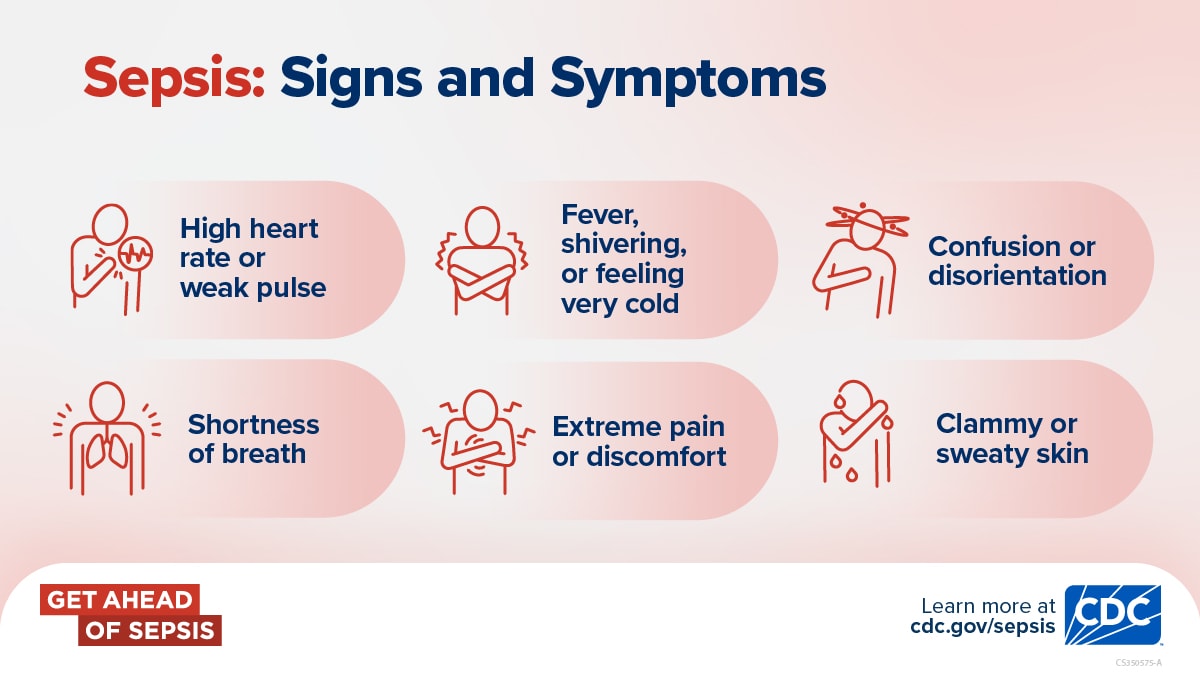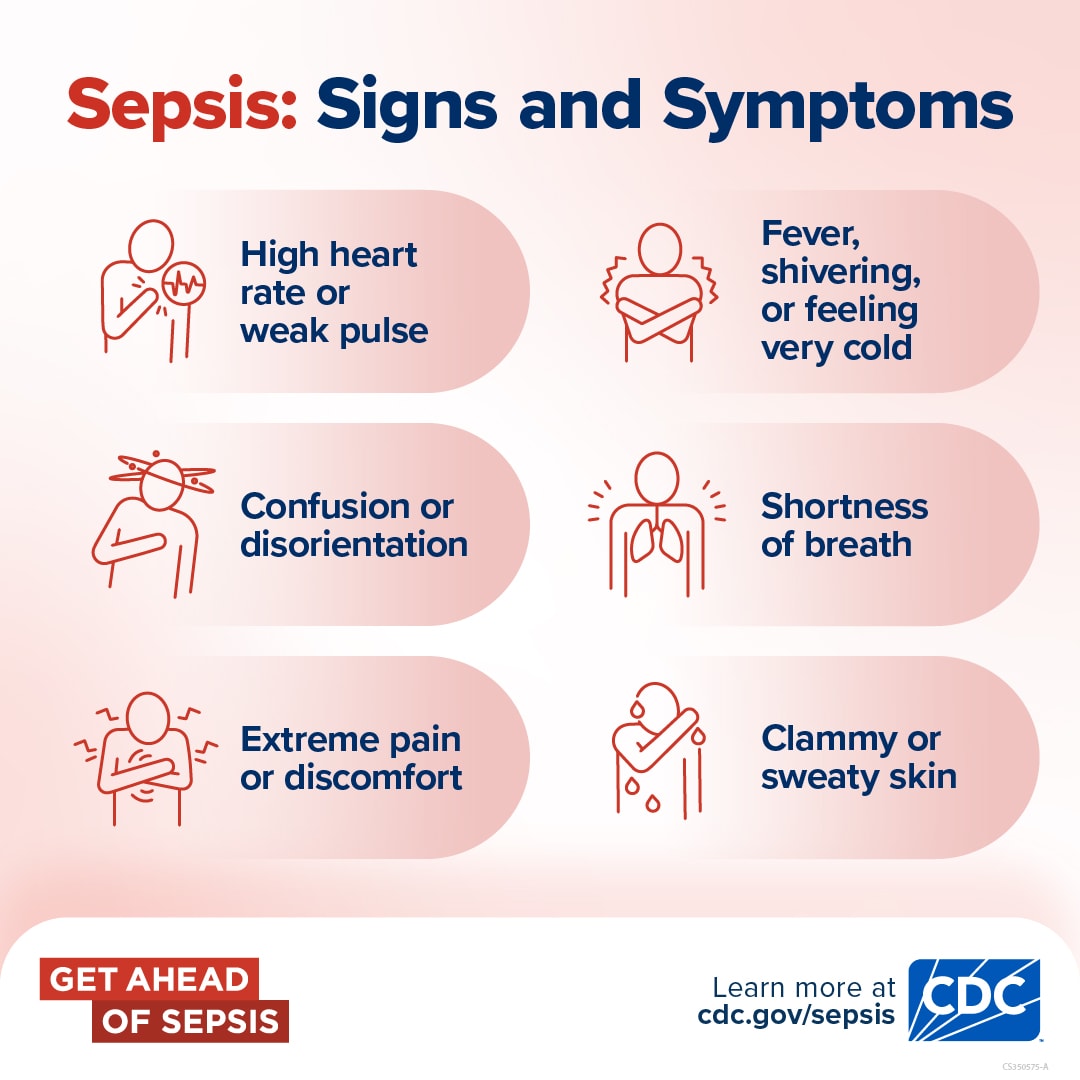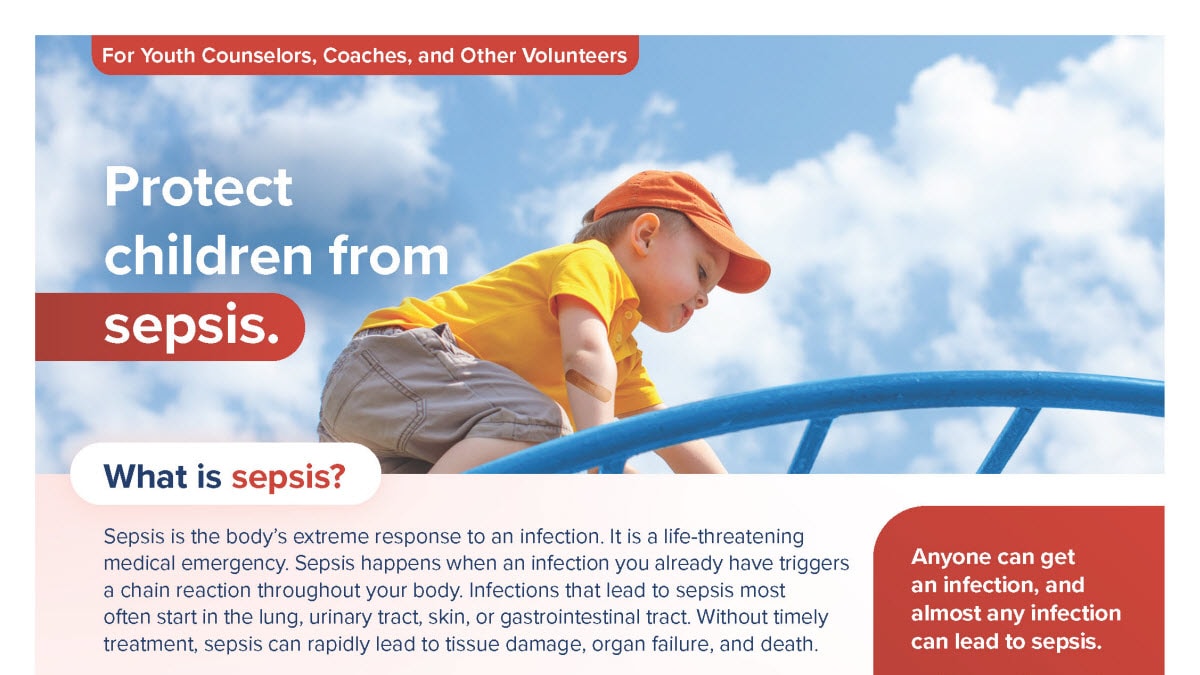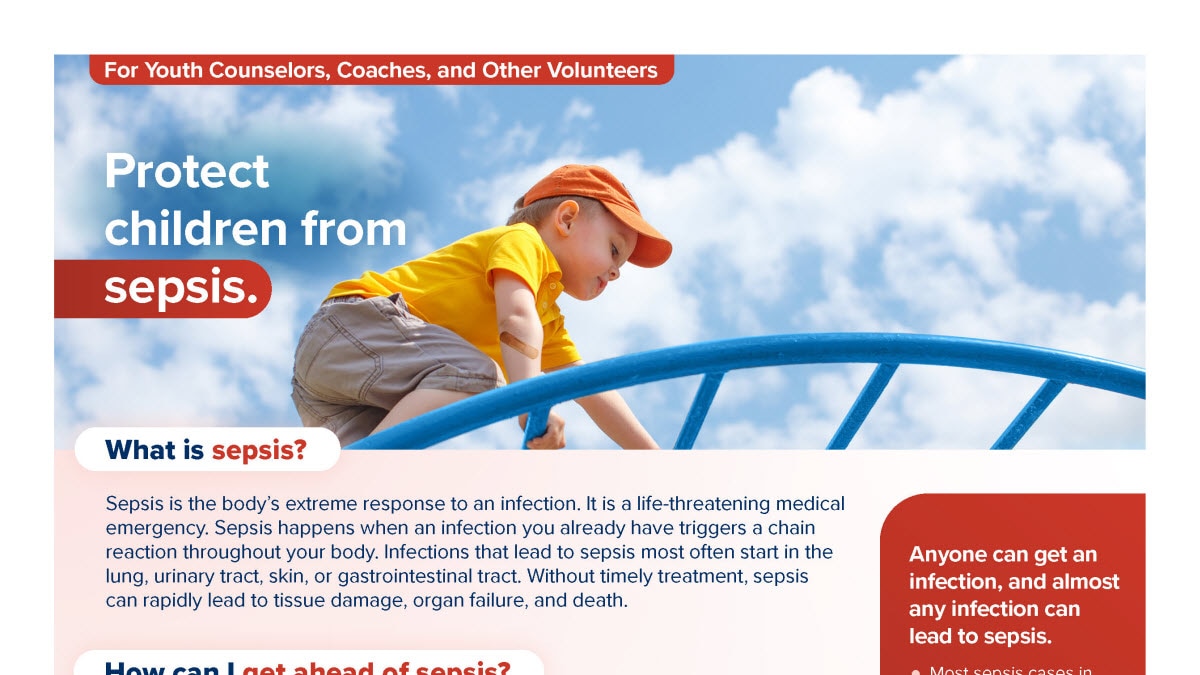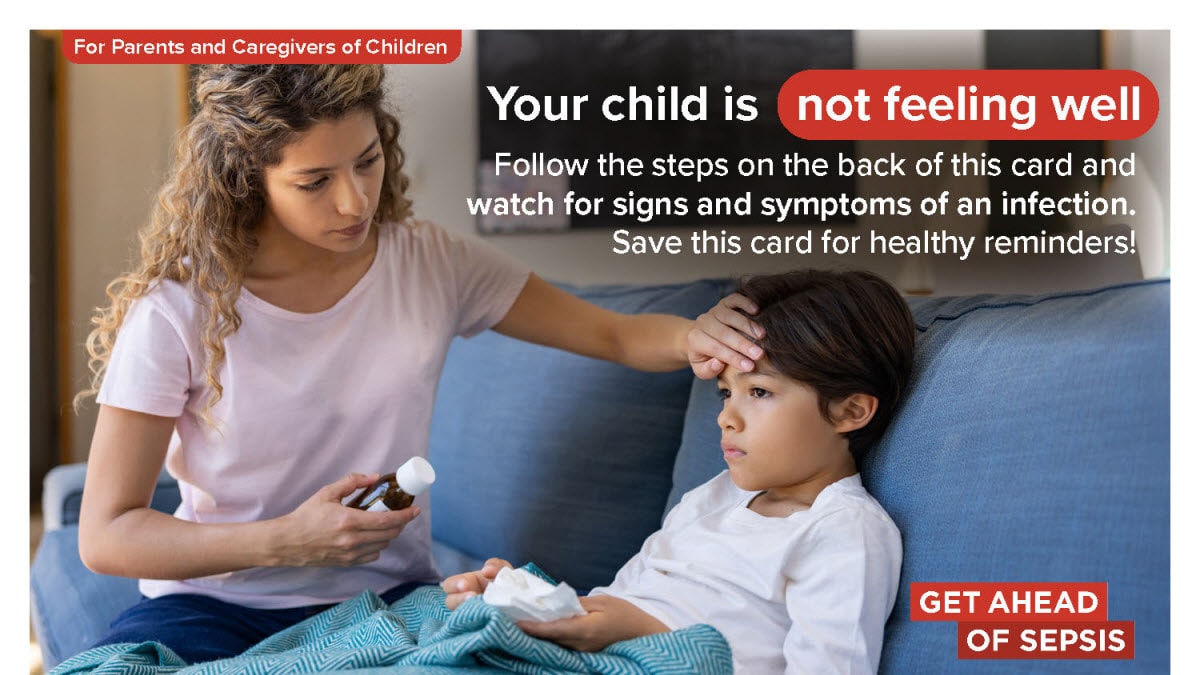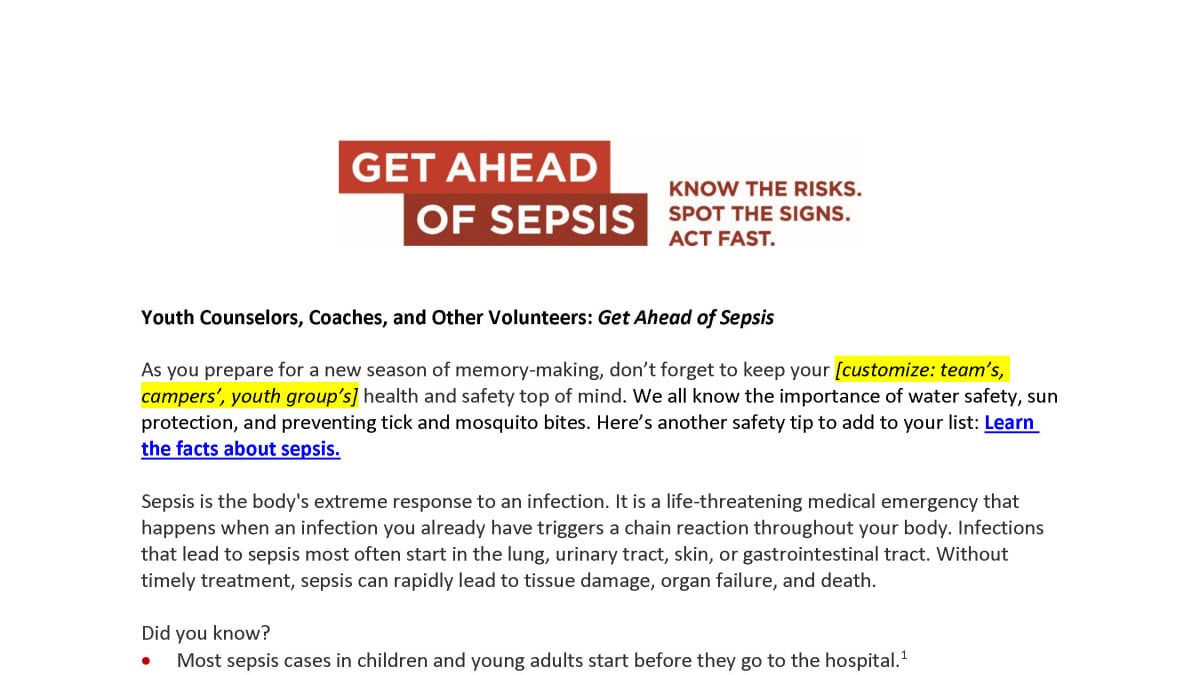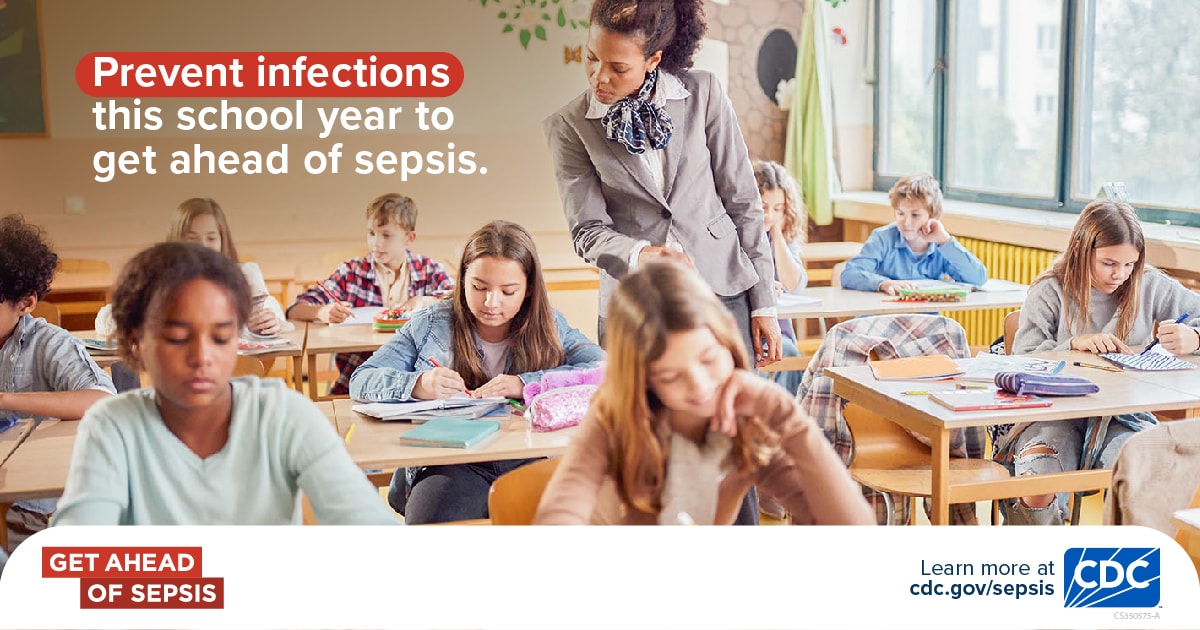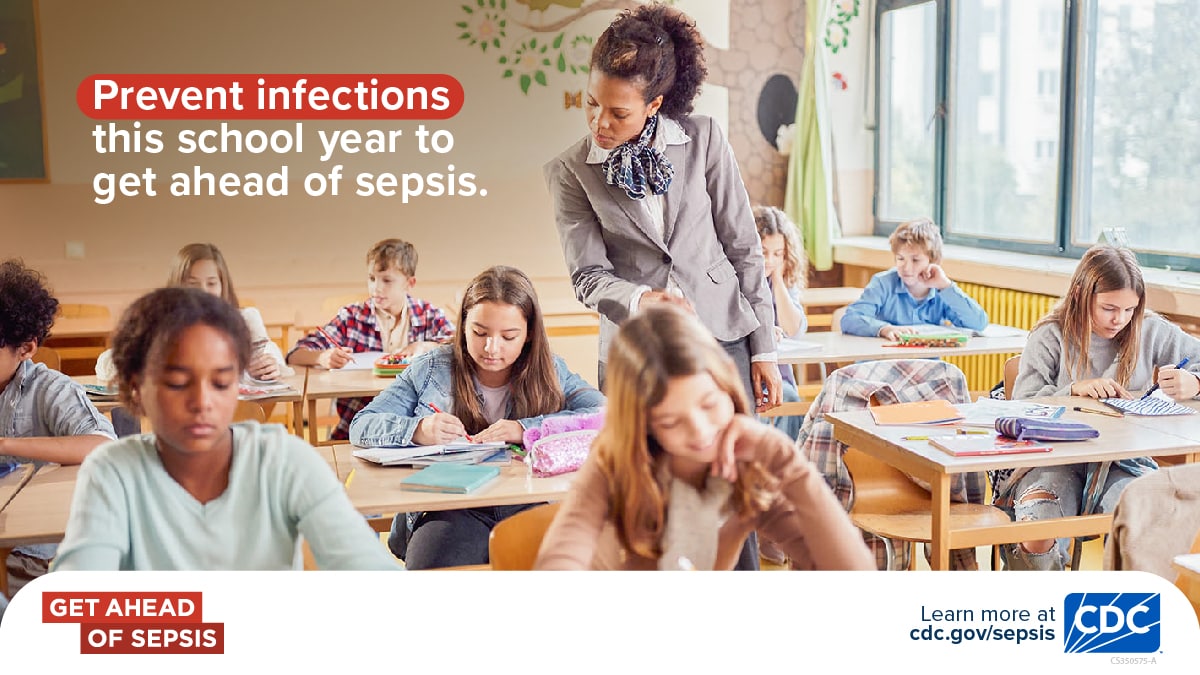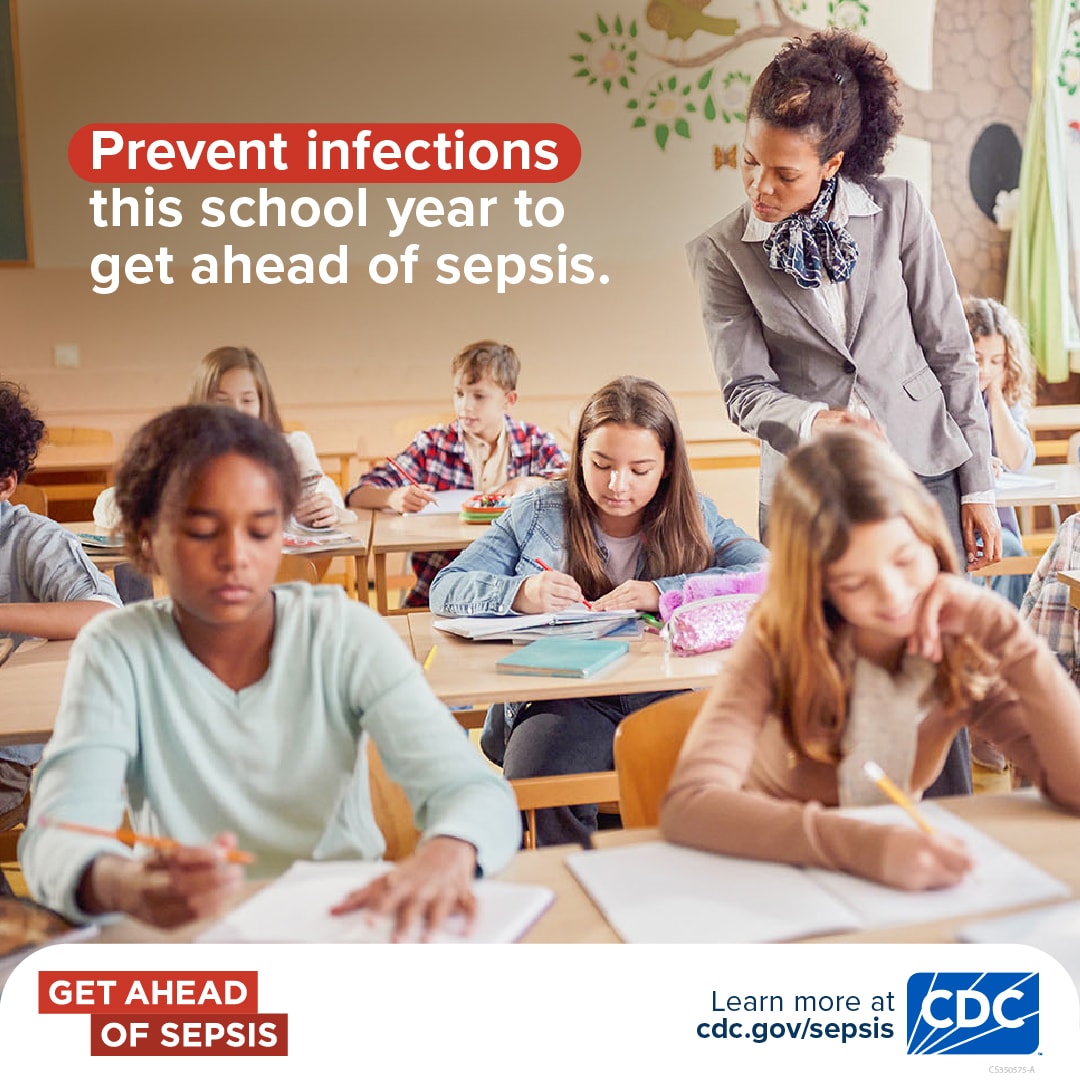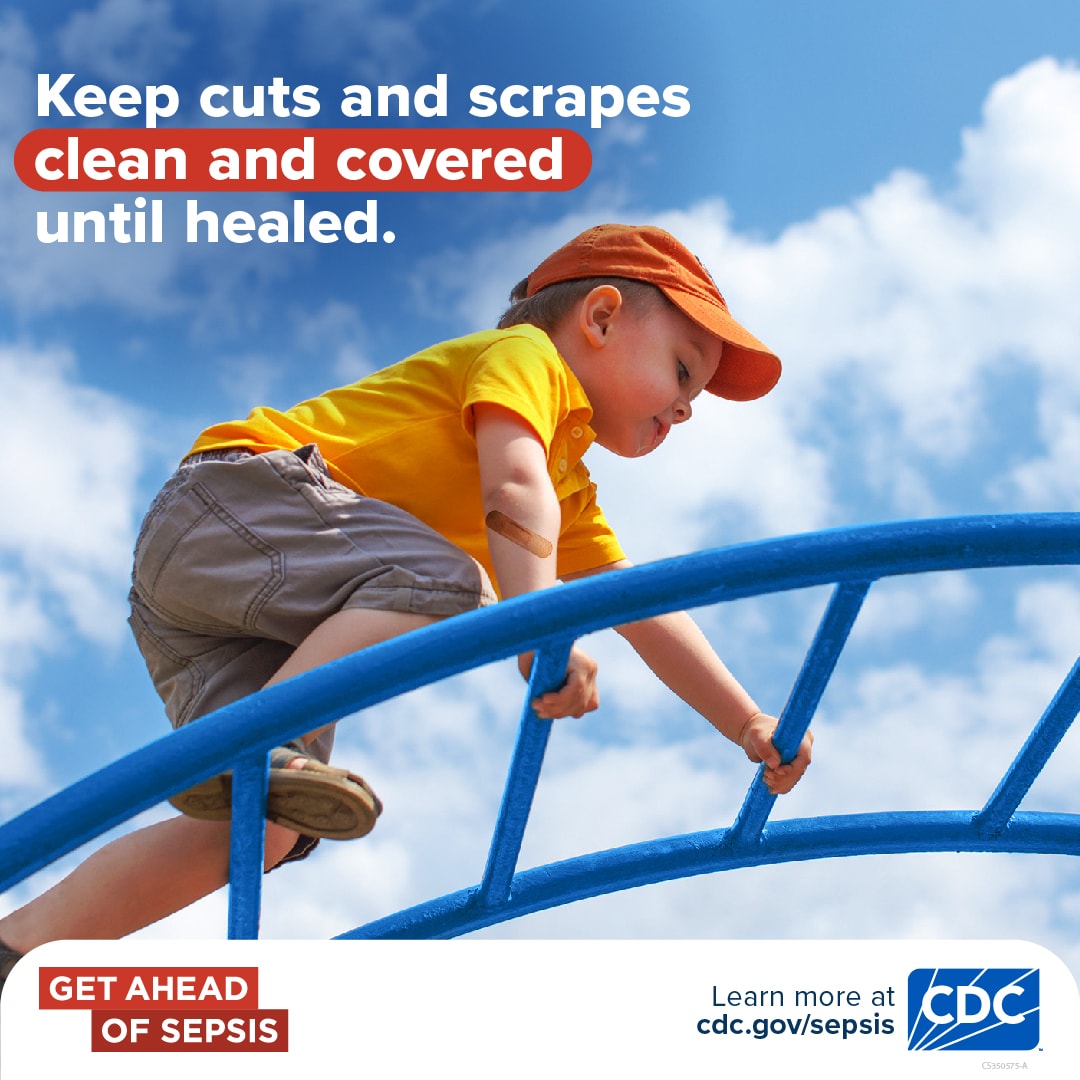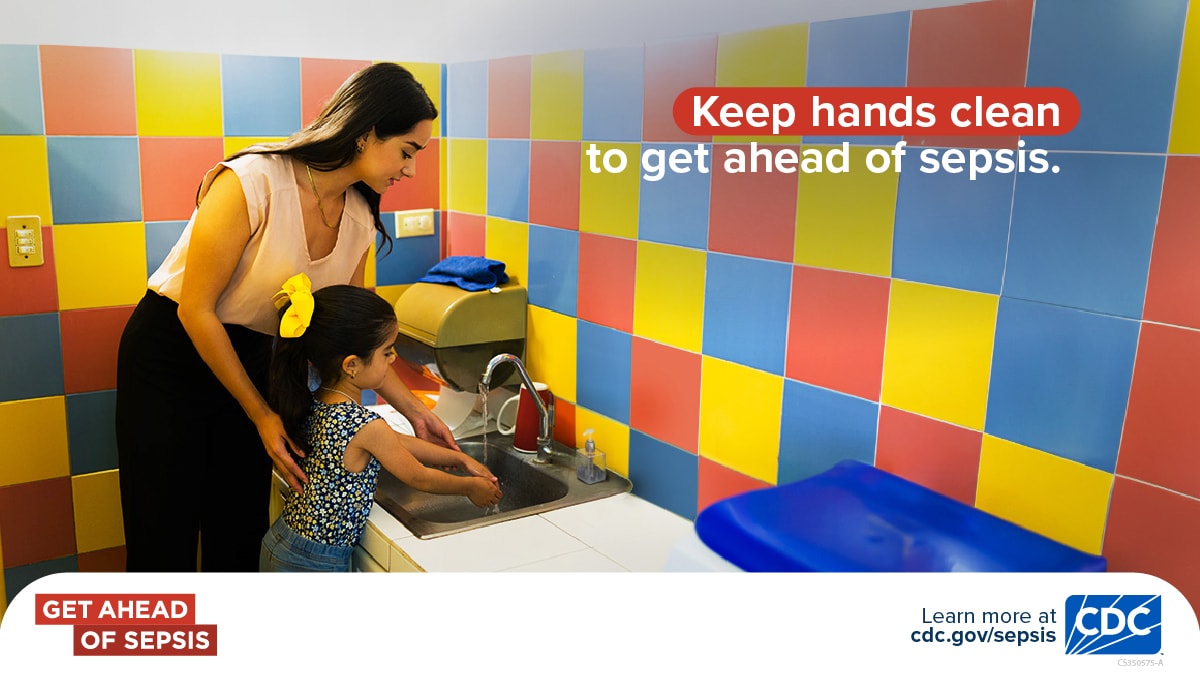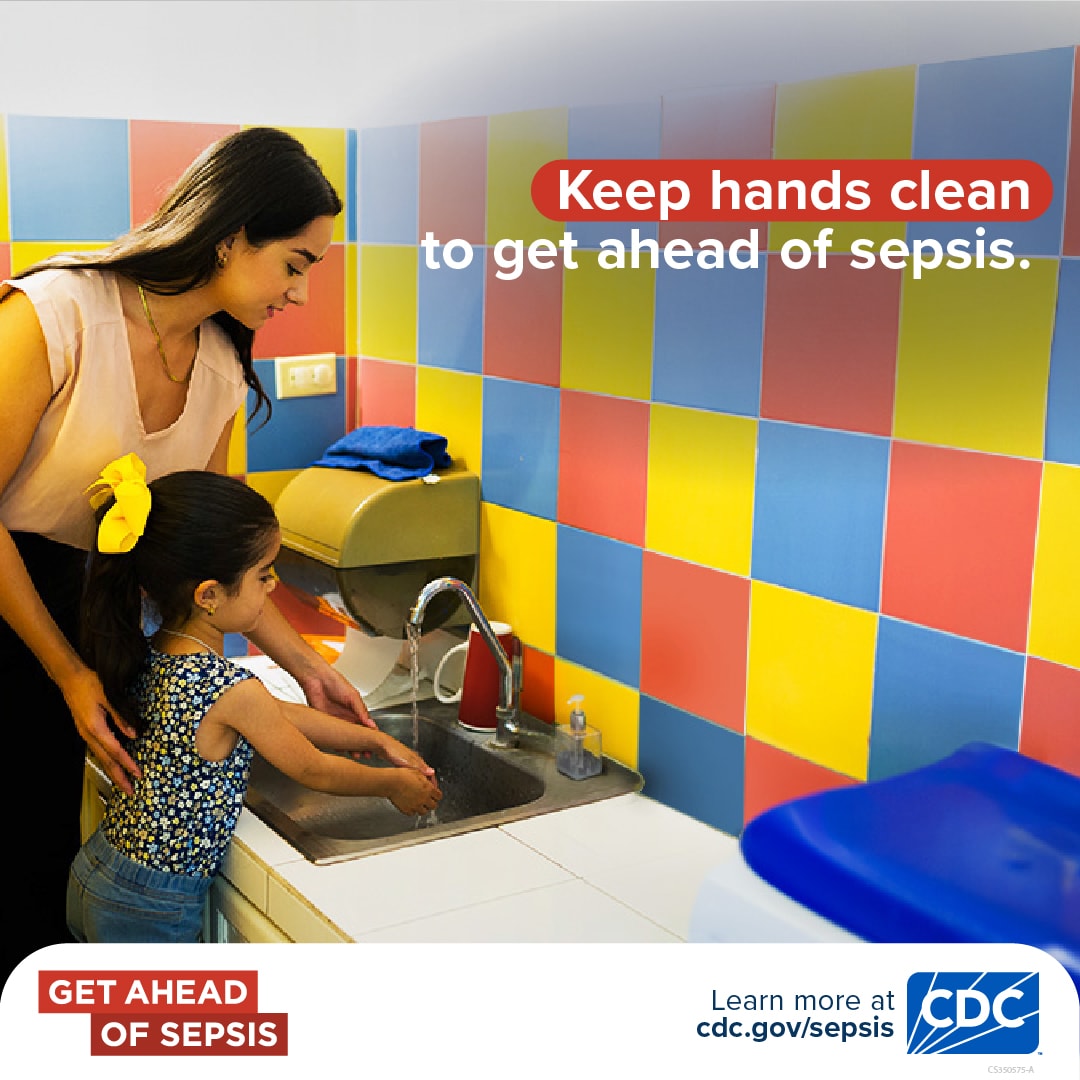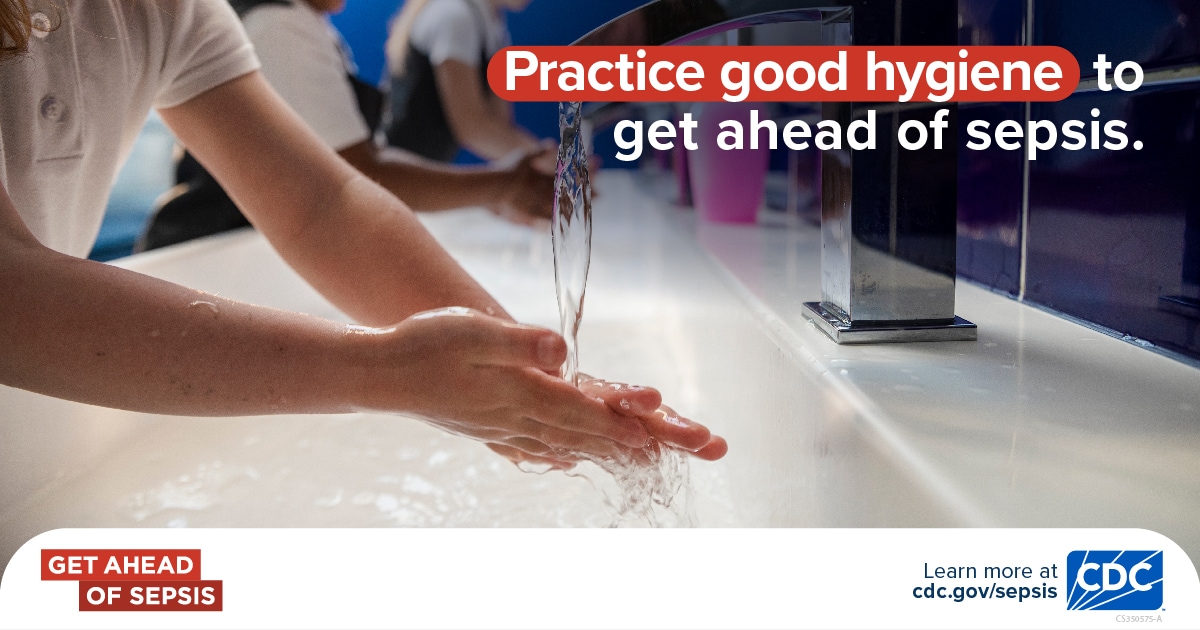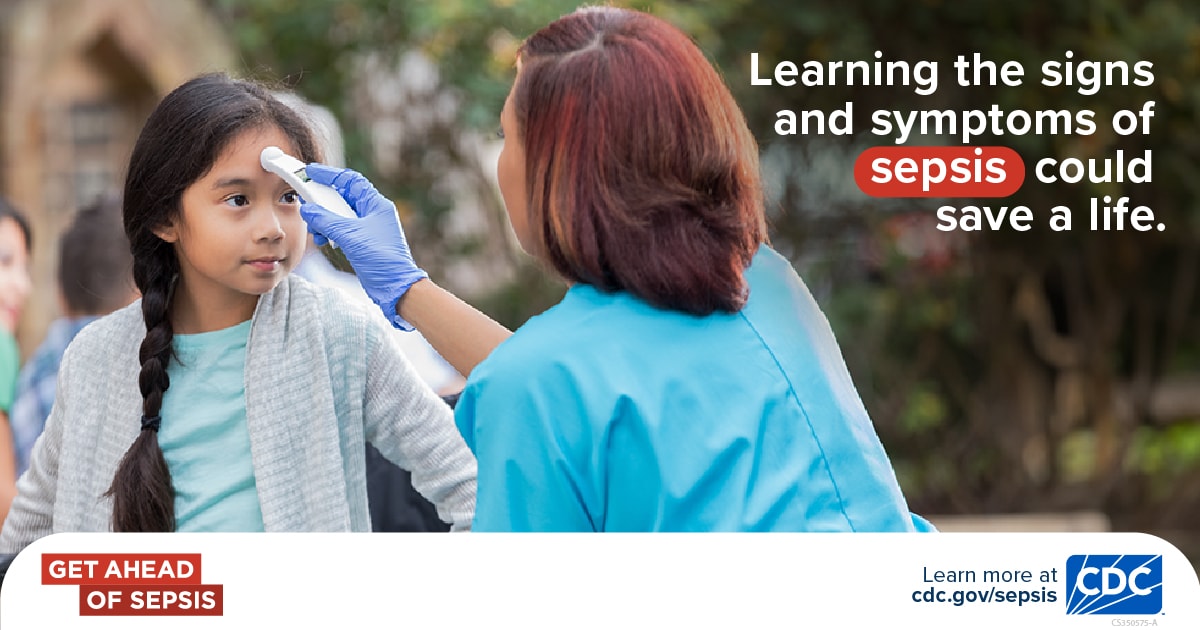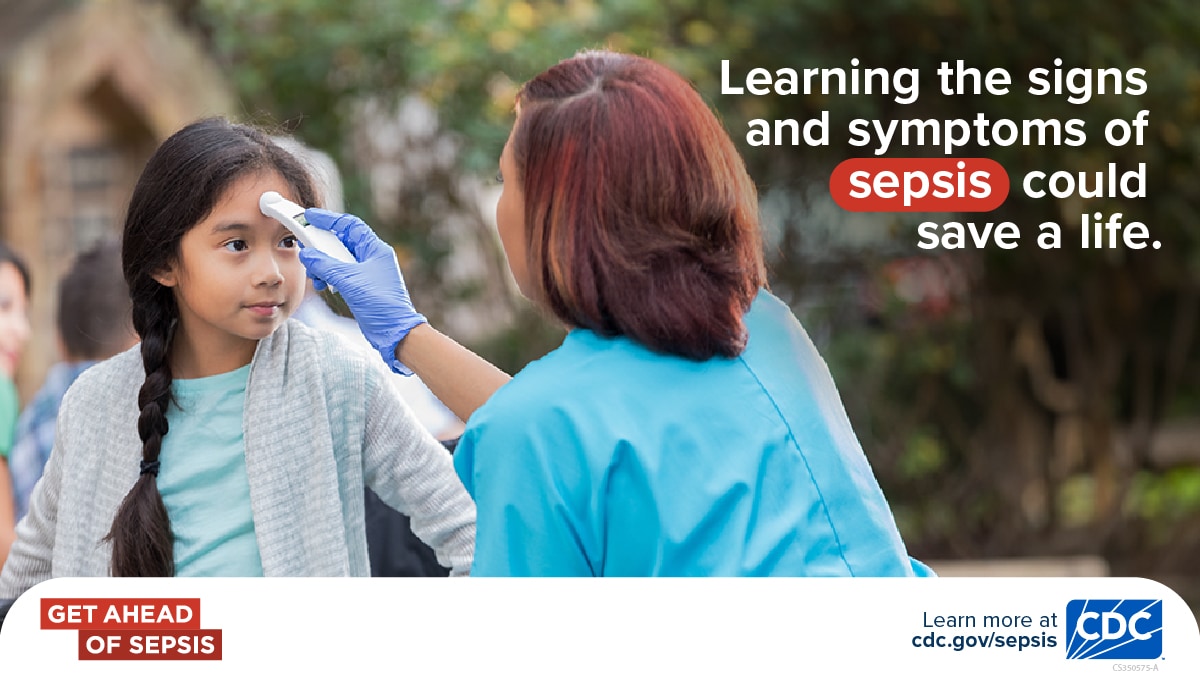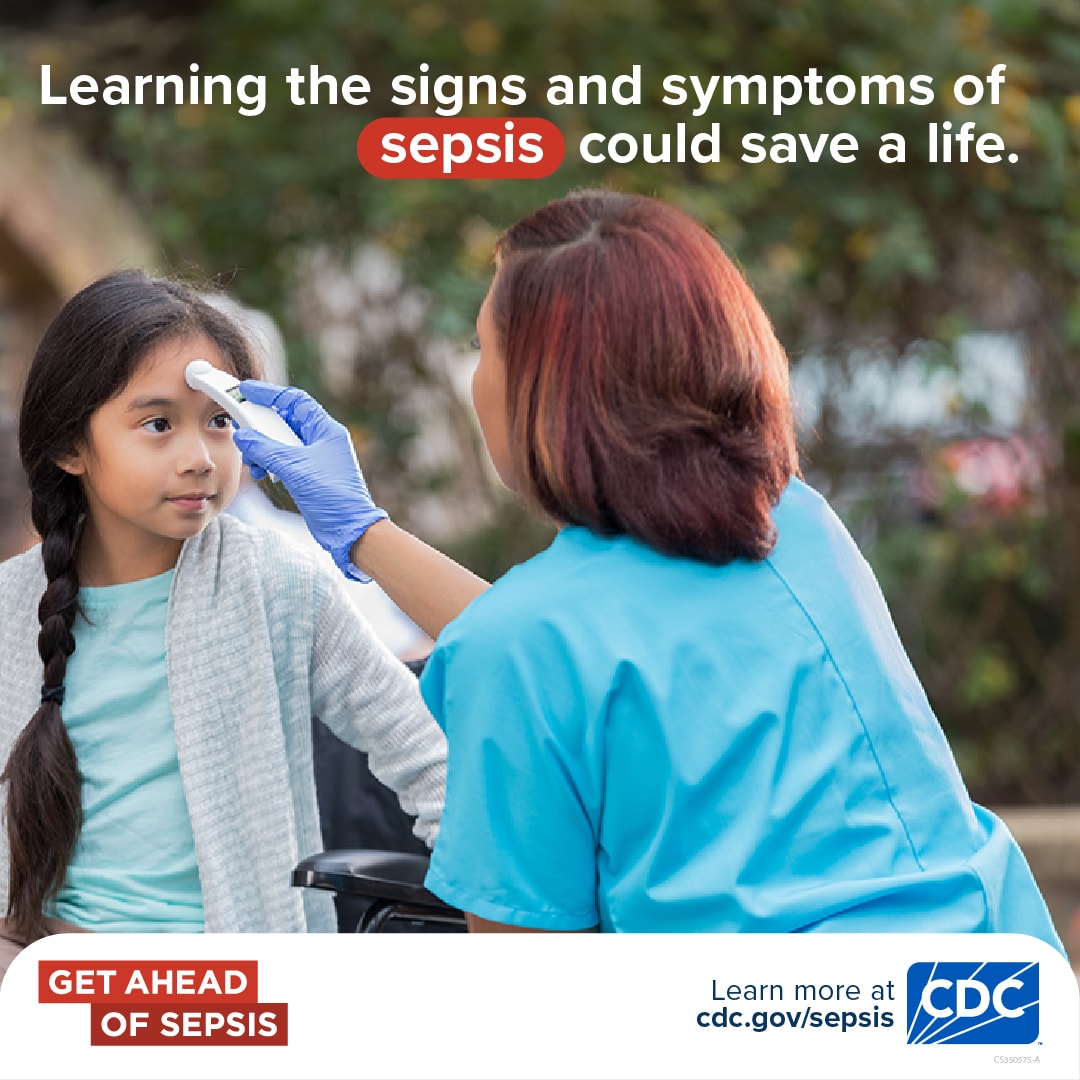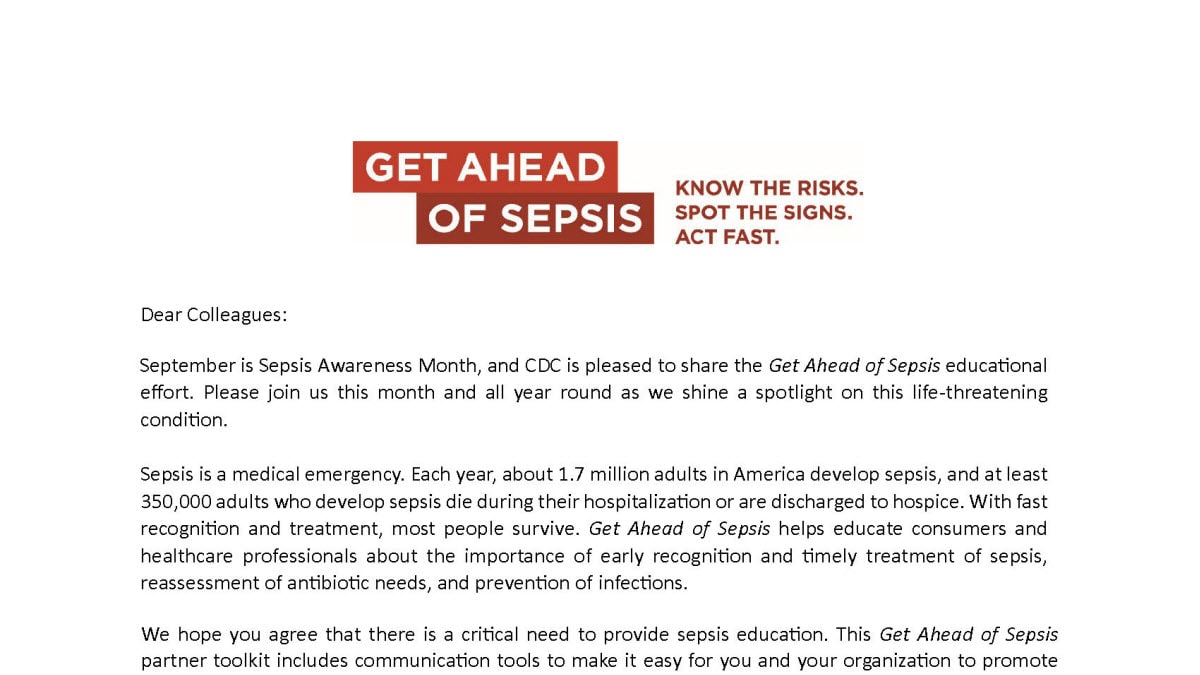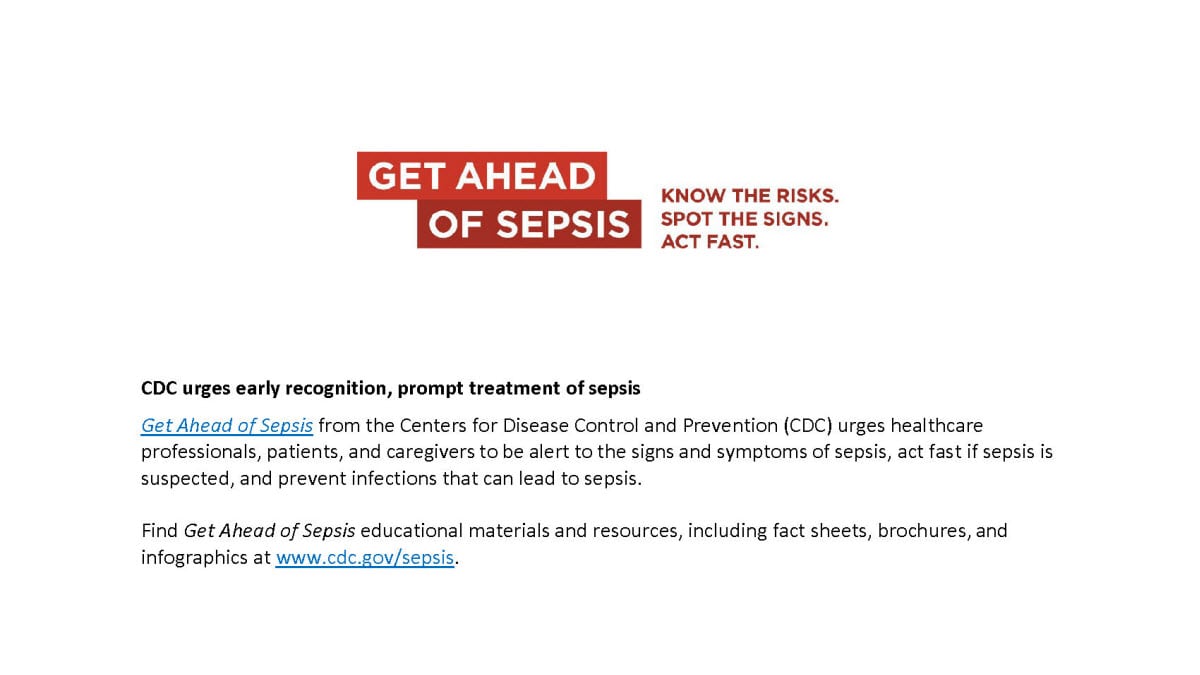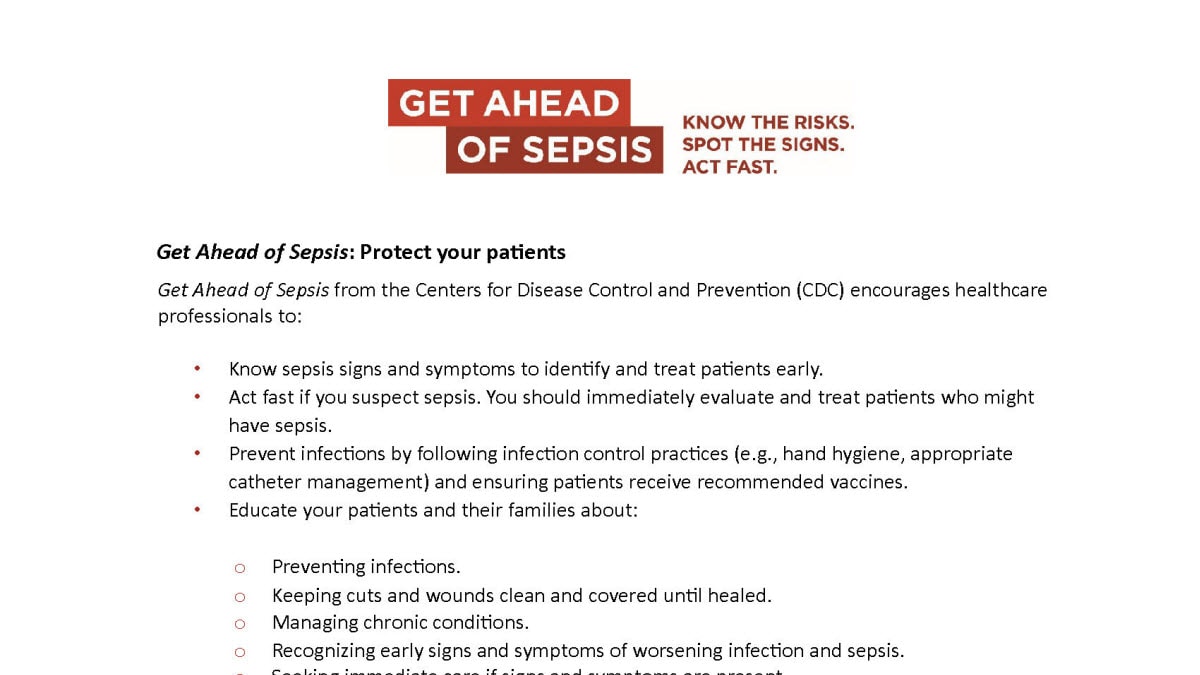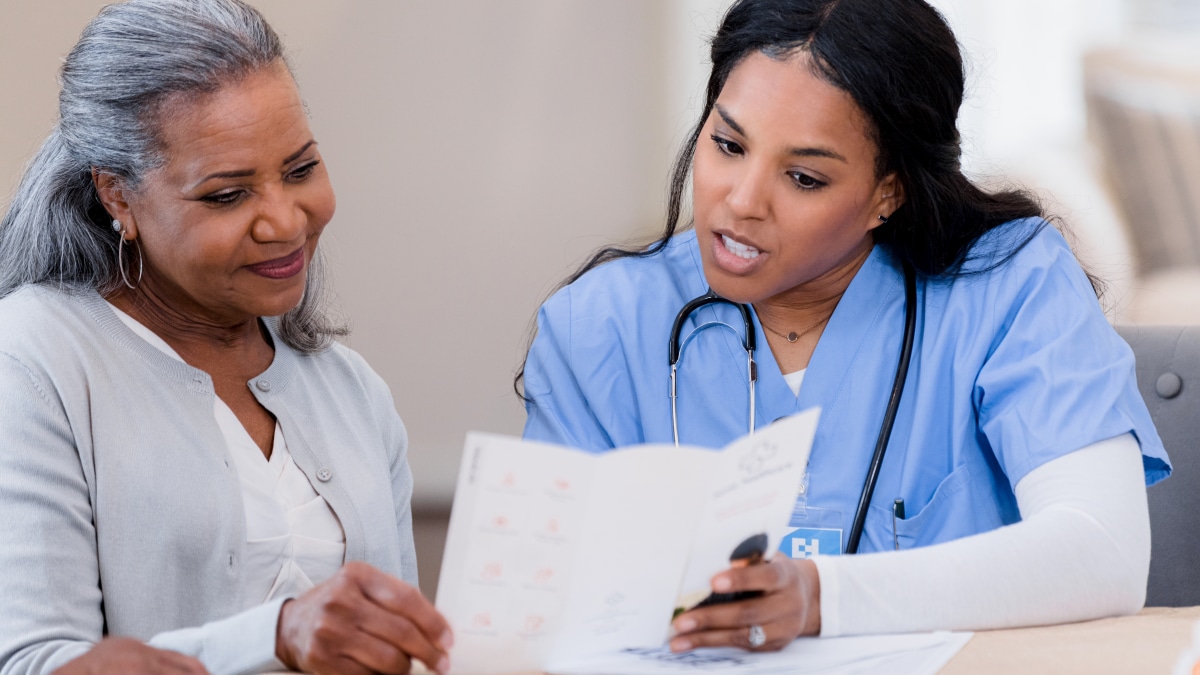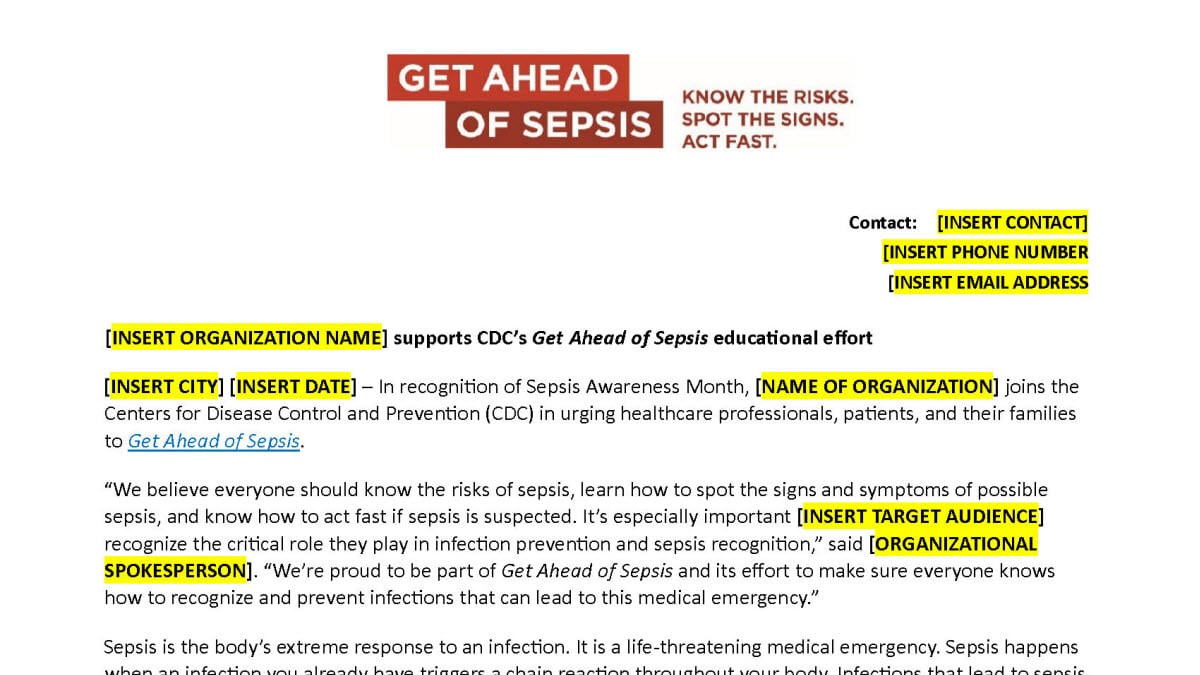Key points
Get Ahead of Sepsis helps partners, parents, caregivers of children, youth coaches, counselors, and other volunteers talk about sepsis, how to prevent infections and how to spot it early.
Overview
This Get Ahead of Sepsis toolkit includes communication tools to make it easy for you and your organization to educate others about early recognition and prompt treatment of sepsis, as well as the importance of preventing and treating infections that can lead to sepsis. Please join our effort to shine a spotlight on sepsis, a life-threatening condition, not only during Sepsis Awareness Month (September), but also all year round.
Intended users
- Parents and caregivers of children.
- Childcare organizations, national youth organizations, organizations or staff who work with or care for children, recreational organizations (including camps), school systems or departments of education, youth athletic organizations and coaches.
- Outreach coordinators and marketing specialists, state and local health departments.
New resources for parents & caregivers of children
Ways to use these resources
- Customize social media messages and share graphics to spark conversation. Remember to use the hashtag #GetAheadOfSepsis.
- Customize the “drop-in” article and graphics for your newsletters, e-blasts, or other publications.
- Watch and share The Domino Effect TV public service announcement and the Get Ahead of Sepsis video.
- Share educational materials and graphics through digital channels or display in places partners, parents, and caregivers may see them.
- Download them below, or order free printed copies through CDC Publications On Demand (select "Sepsis" from the Topic or Program drop-down menu and click "Apply)" or by calling 1-800-CDC-INFO.
- Customize materials, as needed, for your audiences. Please remove the blue CDC logo before adding your organization’s.
- Download them below, or order free printed copies through CDC Publications On Demand (select "Sepsis" from the Topic or Program drop-down menu and click "Apply)" or by calling 1-800-CDC-INFO.
For parents and caregivers of children
CDC is pleased to share a new suite of materials as part of our Get Ahead of Sepsis educational effort. These materials were created for parents and caregivers of children, as well as those who work or volunteer with children at schools, daycares, camps, sports, and other extracurricular activities.
Did you know? Most sepsis cases in children and young adults start before they go to the hospital. There is a critical need to introduce sepsis education to parents, caregivers, staff and volunteers because they spend time with children when signs of an infection could begin to show.
Educational materials
Social media
Graphics
Messages
- Did you know that almost any infection, including skin infections, can lead to #sepsis? Practicing good hygiene can help your children #GetAheadOfSepsis and prevent a medical emergency. Follow these tips! https://www.cdc.gov/sepsis/prevention/index.html
- Remember to prioritize our children’s health & safety. Learn about sepsis. Find out how this life-threatening condition can be recognized & treated early. https://www.cdc.gov/sepsis/about/index.html #GetAheadOfSepsis
- Keep children safe from infections. Encourage good hygiene practices like handwashing & wound care to ensure your children stay healthy. https://www.cdc.gov/sepsis/prevention/index.html #SepsisAwareness #GetAheadOfSepsis
For youth coaches, counselors, & other volunteers
Most sepsis cases in children and young adults start before they go to the hospital. Whether you work with young athletes, campers, or school children, please make sepsis awareness part of your ongoing health and safety training and orientations. We encourage you to share these materials with staff and volunteers, as well as parents and caregivers. You can even use this info to educate and empower children to speak up when they don’t feel well!
Educational materials and tools
Social media
Graphics
Messages
- Cuts & scrapes happen, but infections don’t have to. Make sure to keep cuts and scrapes clean and covered until healed. Get more info on how to reduce a child’s risk of sepsis: https://www.cdc.gov/sepsis/prevention/index.html
- Sepsis is a medical emergency. Educate yourself & others about the signs & symptoms of sepsis, so you can act fast if you suspect it! Download our suite of materials to help protect children from sepsis. https://www.cdc.gov/sepsis/communication-resources/index.html #SepsisAwareness #GetAheadOfSepsis
- If a child has an infection that's not getting better or is getting worse, act fast. Get medical care immediately. Ask a healthcare professional, “Could this infection be leading to sepsis?” & if the child should go to the emergency room. https://www.cdc.gov/sepsis/about/index.html #GetAheadOfSepsis
For public health partners
Resources
Videos
Press releases
Social media messages
Tip
Facebook posts
- Anyone can get an infection, and almost any infection can lead to sepsis. Educating yourself is the first step in reducing your risk. https://www.cdc.gov/sepsis/about/index.html
- Each year, about 1.7 million adults in America develop sepsis. At least 350,000 adults who develop sepsis die during their hospitalization or are discharged to hospice. Educating yourself is the first step in reducing your risk. https://www.cdc.gov/sepsis/about/index.html
- 1 in 3 people who dies in a hospital had sepsis during that hospitalization. Educating yourself is the first step in reducing your risk. https://www.cdc.gov/sepsis/communication-resources/index.html
- Sepsis is the body's extreme response to an infection. It is a life-threatening medical emergency. Sepsis happens when an infection you already have triggers a chain reaction throughout your body. Without timely treatment, sepsis can rapidly lead to tissue damage, organ failure and death. https://www.cdc.gov/sepsis/about/index.html
- Sepsis is a medical emergency. If you or your loved one has an infection that's not getting better or is getting worse, act fast. Get medical care immediately. Ask a healthcare provider, "Could this infection be leading to sepsis?" and if you should go to the emergency room. Learn more: https://www.cdc.gov/sepsis/about/index.html
- One of the best ways to get ahead of sepsis is by following simple infection prevention practices. These include washing your hands, keeping cuts and wounds clean and covered until healed and getting recommended vaccines. https://www.cdc.gov/sepsis/prevention/index.html
- Cleaning your hands with soap and water or an alcohol-based hand sanitizer is a simple and effective way to help prevent infections. Learn more about how you can protect yourself from infections that can lead to a life-threatening condition called sepsis. https://www.cdc.gov/sepsis/prevention/index.html
Visit CDC's Facebook page
X/Twitter posts
- Anyone can get an infection, and almost any infection can lead to sepsis. Educating yourself is the first step in reducing your risk. https://www.cdc.gov/sepsis/communication-resources/index.html #GetAheadOfSepsis
- Each year, about 1.7 million adults in America develop sepsis. At least 350,000 adults who develop sepsis die during their hospitalization or are discharged to hospice. Educating yourself is the first step in reducing your risk. https://www.cdc.gov/sepsis/communication-resources/index.html #GetAheadOfSepsis
- 1 in 3 people who dies in a hospital had sepsis during that hospitalization. Educating yourself is the first step in reducing your risk. https://www.cdc.gov/sepsis/communication-resources/index.html #GetAheadOfSepsis
- Sepsis is the body's extreme response to an infection. It is a life-threatening medical emergency. Without timely treatment, sepsis can rapidly lead to tissue damage, organ failure and death. https://www.cdc.gov/sepsis/about/index.html #GetAheadOfSepsis
- Sepsis is a medical emergency. If you or your loved one has an infection that's not getting better or is getting worse, act fast. Get medical care immediately. Learn more: https://www.cdc.gov/sepsis/communication-resources/index.html #GetAheadOfSepsis
- Practicing good hygiene is one way you can prevent #infections that can lead to #sepsis. Make it a habit to clean your hands with soap and water or an alcohol-based hand sanitizer and #GetAheadOfSepsis. https://www.cdc.gov/sepsis/prevention/index.html
- Is this #infection not getting better, or getting worse? Could it be leading to #sepsis? Start the conversation today with your healthcare professional, so you can #GetAheadOfSepsis. https://www.cdc.gov/sepsis/communication-resources/index.html
- When germs get into a person's body, they can cause an #infection. If you don't stop that infection, it can cause #sepsis. Know the risks, spot the signs and symptoms and act fast, so you can #GetAheadOfSepsis. https://www.cdc.gov/sepsis/about/index.html
Visit @CDCgov and @CDC_NCEZID
Instagram posts
- When germs get into a person's body, they can cause an #infection. If you don't stop that infection, it can cause #sepsis. Know the risks, spot the signs and symptoms and act fast, so you can #GetAheadOfSepsis. CDC.gov/sepsis #publichealth #health #CDC #patientsafety #gethealthy #stayhealthy
- Anyone can get an #infection, and almost any infection can lead to #sepsis. Knowing the signs and symptoms is one easy way you can protect yourself and your family. CDC.gov/sepsis #GetAheadOfSepsis #publichealth #health #CDC #patientsafety #gethealthy #stayhealthy
- Cleaning your hands with soap and water or an alcohol-based hand sanitizer is a simple and effective way to help prevent #infections that can lead to #sepsis. Practice infection prevention steps, like proper #handwashing, to #GetAheadOfSepsis. CDC.gov/sepsis #publichealth #health #CDC #cleanhandscount #patientsafety #gethealthy #stayhealthy
- Anyone can develop sepsis, but some people are at higher risk for developing #infections that can lead to #sepsis. Knowing specific steps to get ahead of sepsis could save your loved one's life. CDC.gov/sepsis #GetAheadOfSepsis #CDC #publichealth #health #stayhealthy #gethealthy
Visit CDC's Instagram page
LinkedIn posts
- Healthcare providers: Each year, about 1.7 million adults in America develop sepsis. At least 350,000 adults who develop sepsis die during their hospitalization or are discharged to hospice. Educate your patients and their families about how to protect themselves from this life-threatening condition. https://www.cdc.gov/sepsis/hcp/communication-resources/index.html
- HCPs: Abx are powerful tools to protect patients from sepsis. But any time abx are used, they can lead to Antimicrobial Resistance. Always prescribe the right antibiotic, at the right dose, for the right duration, at the right time then reassess. https://www.cdc.gov/sepsis/hcp/communication-resources/index.html
- Antibiotics are critical tools for treating life-threatening infections, like those that can lead to sepsis. But any time antibiotics are used, they can contribute to Antimicrobial Resistance. Protect yourself from infections & preserve the power of antibiotics: https://www.cdc.gov/drugresistance/protect-yourself-family.html
- Healthcare providers: Remember to clean your hands with soap and water or an alcohol-based hand sanitizer to protect yourself and your patients from infections that can lead to sepsis. https://www.cdc.gov/sepsis/hcp/communication-resources/index.html
- Healthcare providers: You play a critical role. Educate your patients about ways to prevent infections that can lead to sepsis, how to recognize the signs and symptoms, and when to seek medical care. https://www.cdc.gov/sepsis/hcp/communication-resources/index.html
Visit CDC's LinkedIn page

